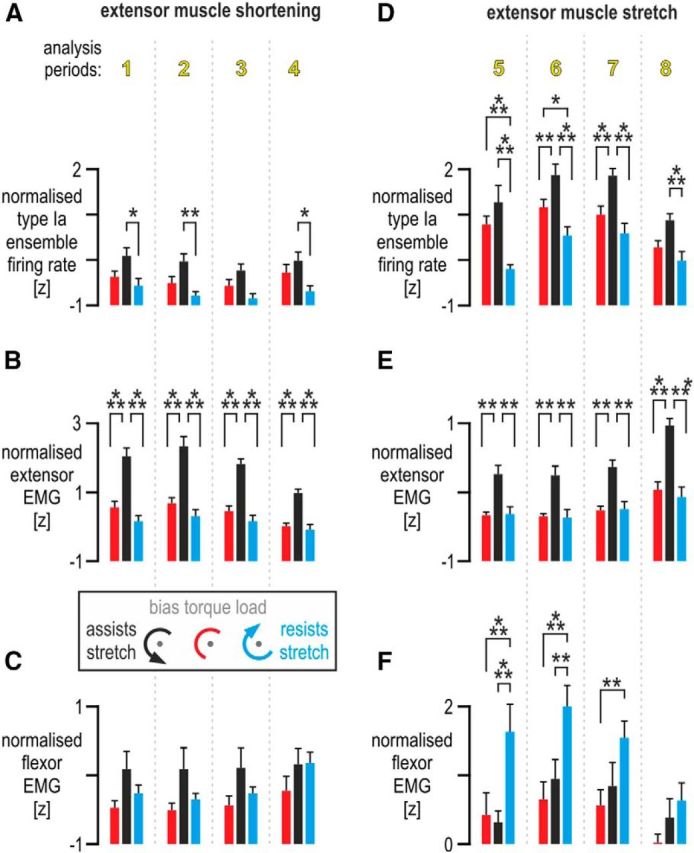Figure 6.

Analyses of afferent responses and muscle activity. A, The effect of bias load on standardized (i.e., z-transformed) firing rates across afferents (n = 9), during periods when the spindle-bearing muscle (extensor digitorum) was shortening (i.e., periods 1–4, as indicated in the middle of Fig. 5). Throughout, bars indicate mean values across afferents, and error bars represent 1 SEM. B, As in A but with regard to extensor muscle EMG. As expected, higher levels of extensor EMG were present throughout shortening when the bias load resisted extension (i.e., flexion was, overzealously, assisted; black bars). However, there were no significant differences in extensor EMG between the no bias load (red) and flexor bias load (blue) conditions throughout extensor shortening. C, As in B but pertaining to flexor EMG. No significant differences in flexor EMG were observed during extensor shortening. D, The effect of bias load on ensemble firing rates at each period during extensor muscle stretch (i.e., periods 5–8, as indicated in the middle of Fig. 5). E, As in D but pertaining to extensor digitorum EMG activity. The same differences were observed as in B. That is, higher levels of extensor EMG were present throughout extensor stretch when the extensor was loaded (i.e., flexion was assisted; black bars). However, there were no significant differences in extensor EMG between the no bias load (red) and flexor bias load conditions (blue) throughout extensor stretch. F, As in E but pertaining to flexor EMG. Throughout extensor stretch, there were no significant differences in flexor EMG between the no bias load (red) condition and the condition in which the bias load induced higher extensor activity levels (black bars). However, significantly higher flexor EMG was observed when the flexor muscle was loaded during extensor stretch (i.e., flexion resisted; blue bars), particularly during the initial two periods of extensor stretch (i.e., periods 5 and 6). *p < 0.05, **p < 0.01, ***p < 0.001.
